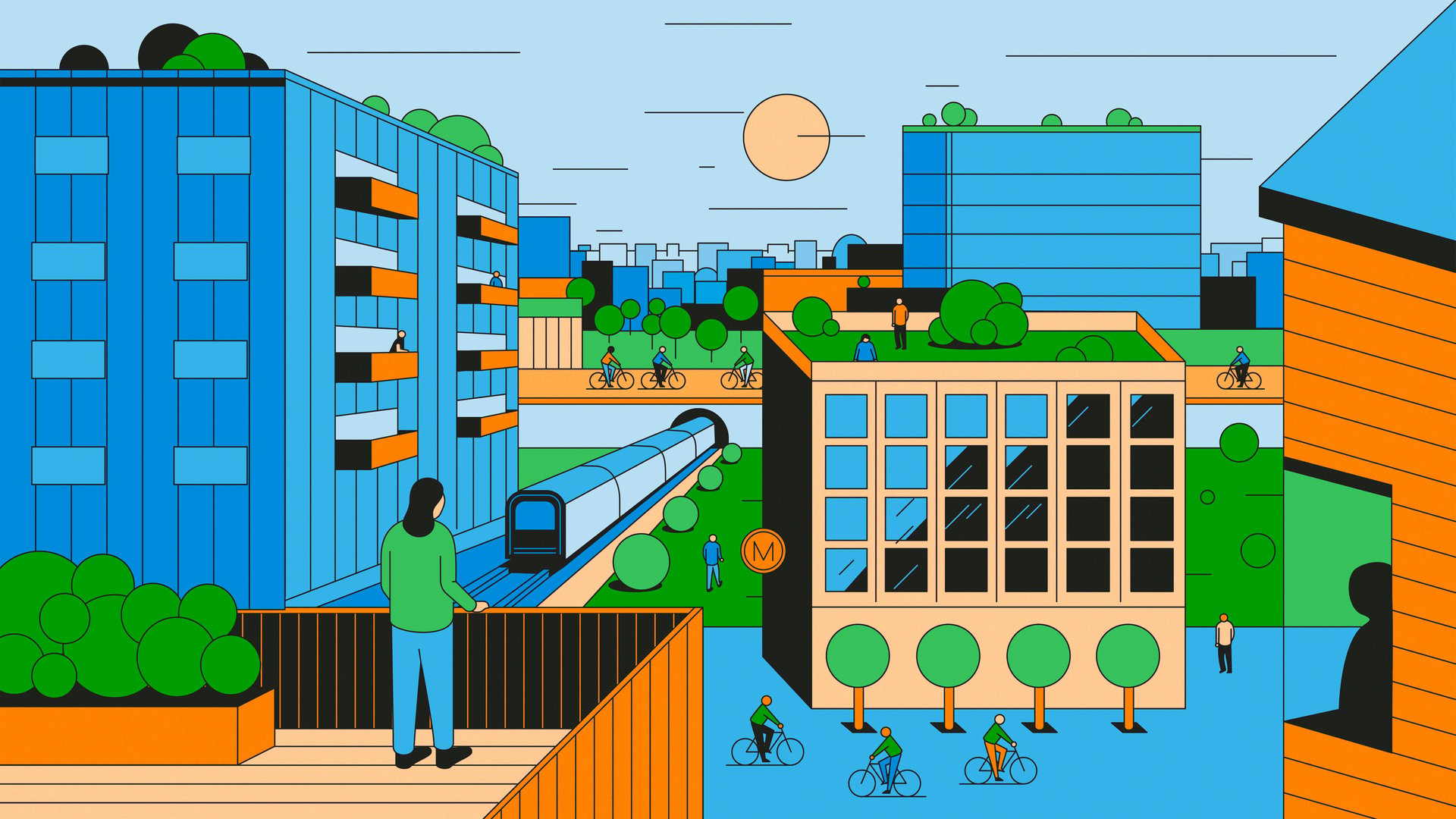EVs can’t go mainstream until cities upgrade infrastructure
With the hype surrounding Tesla and the Motor City on board, electric vehicles (EVs) have come a long way since Prius punchlines. Still, the US transition has been shaky, with EVs making up less than 2% of the auto market. This number is expected to jump over the next two decades, but most cities have miles to go before making them a viable option for citizens.


With the hype surrounding Tesla and the Motor City on board, electric vehicles (EVs) have come a long way since Prius punchlines. Still, the US transition has been shaky, with EVs making up less than 2% of the auto market. This number is expected to jump over the next two decades, but most cities have miles to go before making them a viable option for citizens.
From necessary resources to nice-to-have extras, here are three ways city infrastructure can jump-start the EV revolution.
Lead the way

The current lack of EV-minded city framework has slowed widespread adoption, especially in big cities like New York. That’s because most residents live in apartment buildings, and those require multiple charging stations and significantly more electricity. Thankfully, both sustainability-minded businesses and cities are working—sometimes together—to make charging more accessible ASAP.
In 2019, leading North American charging network FLO helped Los Angeles build EV plugs into existing streetlights. This approach is faster and more cost-effective than traditional curbside charging deployment and allowed them to build charging coverage for 89% of the city’s square mileage. In British Columbia, FLO’s fast-charging initiative with electricity and natural gas distributor FortisBC led to a 73% increase in the number of registered EVs in their service area between November 2019 and today. And in 2021, FLO will work with Con Edison and the New York Department of Transportation to roll out a 100+ charger pilot project across all five boroughs in New York City. While charging is a paid service, many of these stations will be installed in free street parking spots to help drivers avoid additional fees.
“Surveyed customers remain skeptical of EVs until charging options are available and affordable,” explains FLO’s Senior Director of Marketing Daniel Nguyen. “Con Edison’s PowerReady program incentivizes station developers and aims to add thousands of chargers to NYC over the next few years.”
The benefits of placing these charging stations in high-traffic areas extend beyond sustainability; with enough visitors, they can generate profit for cities relatively quickly. With PowerReady, FLO and Con Edison want to increase awareness among drivers, appeal to existing communities, provide business opportunities for developers, and show that if you build chargers, the drivers will come.
Refashion fleets

To combat climate change and further normalize electric transit, Columbus, OH traded in its gas-guzzling public transportation wheels for EVs. In 2018, Columbus Yellow Cab (CYC) collaborated with outside experts to figure out how to do so safely and effectively.

The city’s switch to eco-friendly automotives has lowered CYC’s maintenance costs and reduced greenhouse gas and air pollutant emissions. A similar overhaul in China also generated a charging demand that now serves private citizens as much as taxis and other non-personal vehicles. Since 2010, the country has installed over 800,000 public charging stations to support its nearly 5 million (and counting) new energy vehicles, compared with the US’ 41,400 charging stations and 1.4 million plug-in EVs. This type of change could be implemented for delivery trucks, city service fleets, and local public transit, as well, and help set a new precedent for other countries hoping to adopt and promote this sustainability practice.
Incentivize adoption

Ideally, we would all eagerly hop on the EV bandwagon, happily riding around in our climate-conscious cars and trucks simply because it’s the right thing to do. But even the most well-intentioned drivers sometimes need an incentive to switch. Cities can help with this, too.
In California, where over 10% of US public EV charging ports are located, EV drivers are eligible for high-occupancy vehicle (HOV) lane access. Other states in the US, including Connecticut, Maine, and Pennsylvania, offer tax credits and rebates for purchasing EVs. In parts of Norway, the government subsidizes free EV parking. They also tax vehicles based on emissions, so zero-emission cars are billed at half the rate of fossil fuel vehicles when traveling on toll roads. These benefits, in combination with the country’s charging foundation, make trading in your gas guzzler that much more appealing.
While encouraging individual car owners to go electric will certainly slow the effects of global warming, the most meaningful change will come from enterprises and governments. Over the next three years, the Canadian government will invest $150 million in charging and hydrogen refueling stations across the country—a necessary initiative to encourage EV adoption. In the US, President Biden is pledging $174 billion toward EV development, including expansion of the country’s charging networks and tax credits and rebates for businesses and governments who purchase EVs. The president has also proposed offering financial assistance to automakers to cover production costs, job training, and raw materials development, and prioritizing a cleaner, more resilient electric grid.
The fight against climate change requires both lifestyle and societal reform. Support from cities across the globe will help us all do our part to preserve our planet.